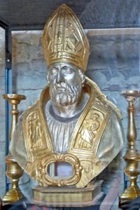

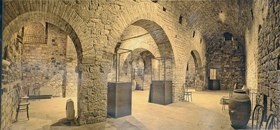
The steps to the right of the facade of the Abbazia di San Pietro lead down to part of the monastery that has recently been adapted to house the museum. Opening hours are published on the website of Musei Ecclesiastici Umbri. However, access is subject to the availability of staff: it proved to be impossible during my visit at Easter, 2010. (The photograph above is a copy of the advertisement outside the church). I was able to see the crypt, which is alternatively reached from the steps on the right in the church.
Crypt
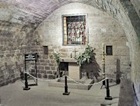
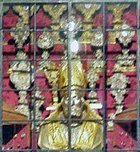
Pozzo dei Martiri
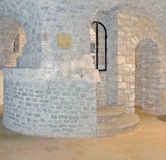
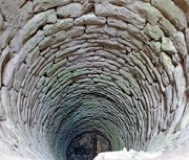
This is the well in which it is believed that the companions of St Victorinus were martyred.
Ospedale di San Pietro (1250)
An underground passage leads to what was the hospice of the Confraternita di San Pietro.
Roman City Gate
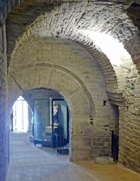
Art Collection
Madonna della Mela (14th century)
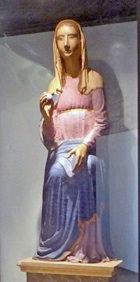
Madonna and Child with saints (ca. 1468)
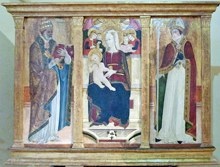
This altarpiece depicts the Madonna and Child with musical angels and SS Peter and Victorinus. It is signed by Matteo da Gualdo and dated 14... in the inscription on the throne. (The date of 1468 is assumed on stylistic grounds, with reference to Matteo’s securely dated frescoes in the Oratorio dei Pellegrini). The inscription under the throne records the name of the donor, Abbot Bartolomeo.
The altarpiece was first documented in 1872 [in San Pietro]. It was exhibited in Perugia in 1907, but was substituted, perhaps during the exhibition, by a good copy. The original was recovered from a private collection in Rome in 1912. It was then returned to San Pietro and placed in the monastery chapel.
Bust of St Victorinus (16th century)
